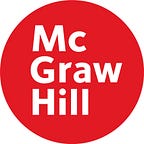Developing Fluency with Basic Math Facts
By Katie Rich, UChicago STEM Education Curriculum Developer
For students in the early elementary grades, learning basic addition and subtraction facts like 4+4 = 8 and 13-6 = 7 is an important goal for progressing in mathematics. The ability to quickly and accurately produce the answer to basic fact problems — a skill called fluency with basic facts — allows children to focus their attention on other aspects of more complex mathematical problems. In the past, it was common to give students many speed-based drills in order to develop their fluency with addition and subtraction facts. However, while such drills work for some students, many others develop mathematics anxiety as a result of the heavy focus on speed-based facts tests.
Thankfully, researchers and curriculum developers have been exploring other instructional strategies for helping students develop fluency with basic facts. One such strategy is to organize instruction in basic facts around helper facts, or a subset of the full set of addition and subtraction facts that seem to be most easily learned by students in early elementary school. Helper facts include the doubles facts (such as 7 + 7 = 14), the plus-one facts (such as 4 + 1 = 5), and the combinations of ten (such as 8 + 2 = 10). Once students acquire fluency with these facts, they can use them as “helpers” when solving other, more difficult facts. For example, when solving 7 + 8, students could think of the problem as “one more than 7 + 7” (that is, think of 7 + 8 as 7 + 7 + 1). They could recall the helper fact 7 + 7 = 14, then reason that 7 + 8 as one more than 14, or 15.
Can using helper-fact strategies in facts instruction be beneficial in helping students learn basic facts? My colleague, Dr. Meg Bates, and I recently conducted a study that suggests that it can! Using data from over 150,000 students who played an online facts-practice game, the Facts Workshop Game from the Everyday Mathematics curriculum, we analyzed students’ performance with two potential sets of helper facts compared to students’ performance with other facts. Specifically, we looked at student performance on doubles facts and on +/–0 and +/–1 facts, which we call simply 0s/1s facts.
The analysis produced three results that suggest that helper-fact instruction could be beneficial.
More students were fluent with doubles facts and 0s/1s facts than with other facts.
More than 32% of the students in our study were able to consistently answer doubles facts correctly in less than 6 seconds. Over 25% were able to consistently answer 0s/1s facts correctly in less than 6 seconds. By comparison, only 12% of students were able to consistently answer all facts correctly in the same amount of time. This suggests that doubles facts and 0s/1s facts are easier for students to learn, on average, than other facts. Doubles and 0s/1s therefore seem good candidates for use as helper facts.
Students seem to become fluent with doubles and 0s/1s facts earlier than they become fluent with other facts.
About 32% of the students in our study were fluent with doubles facts, 0s/1s facts, or both without also being fluent with all facts. By contrast, less than 2% of students were fluent with mixed facts without also being fluent with doubles or 0s/1s. This suggests that it is much more common for students to develop fluency with doubles and 0s/1s early in their fluency development, further supporting the use of doubles and 0s/1s as helper facts.
Students who were fluent with doubles and 0s/1s facts solved other facts faster.
The students who were fluent with doubles facts produced correct answers to other facts significantly more quickly than students who were not fluent with doubles. Additionally, the quicker students answered doubles facts, the quicker they answered other facts. That is, students who could answer doubles facts within 6 seconds answered other facts faster than students who could answer doubles facts within 15 seconds. A similar pattern was true for fluency with 0s/1s facts, although these facts had a weaker association to speed on other facts than did doubles facts. Still, the association between fluency with each helper fact group and speed in solving other facts is consistent with the idea that students were using the helper facts to help them solve other facts.
Although we cannot make any definitive conclusions based on our study, we believe the results strongly suggest that teaching basic facts through a helper-fact approach can be beneficial for students.
Katie Rich is a Ph.D. student in Educational Psychology and Educational Technology at Michigan State University. Prior to starting a Ph.D., she earned a B.A. in mathematics and an M.A. in learning sciences, then spent over ten years working as an editor and curriculum developer for the Everyday Mathematics author team at the University of Chicago. She is currently researching various uses of technology in elementary mathematics education, including potential intersections between mathematics and computer science. She can be reached at richkat3@msu.edu.
